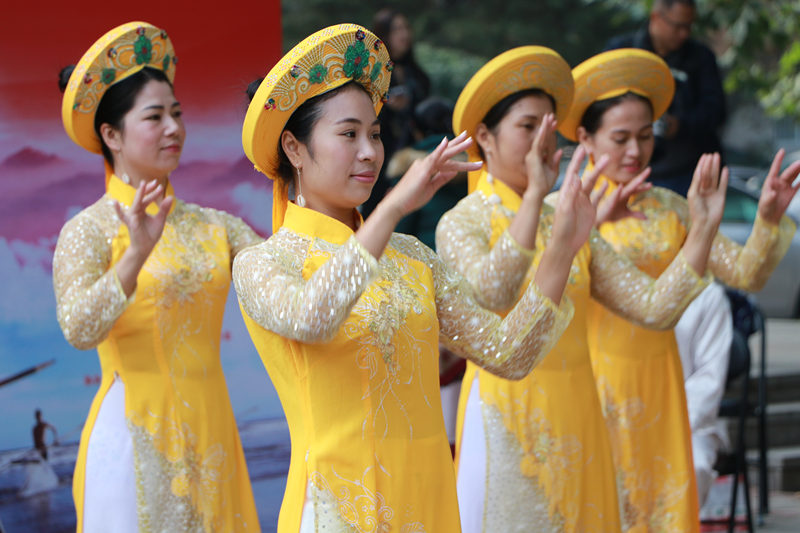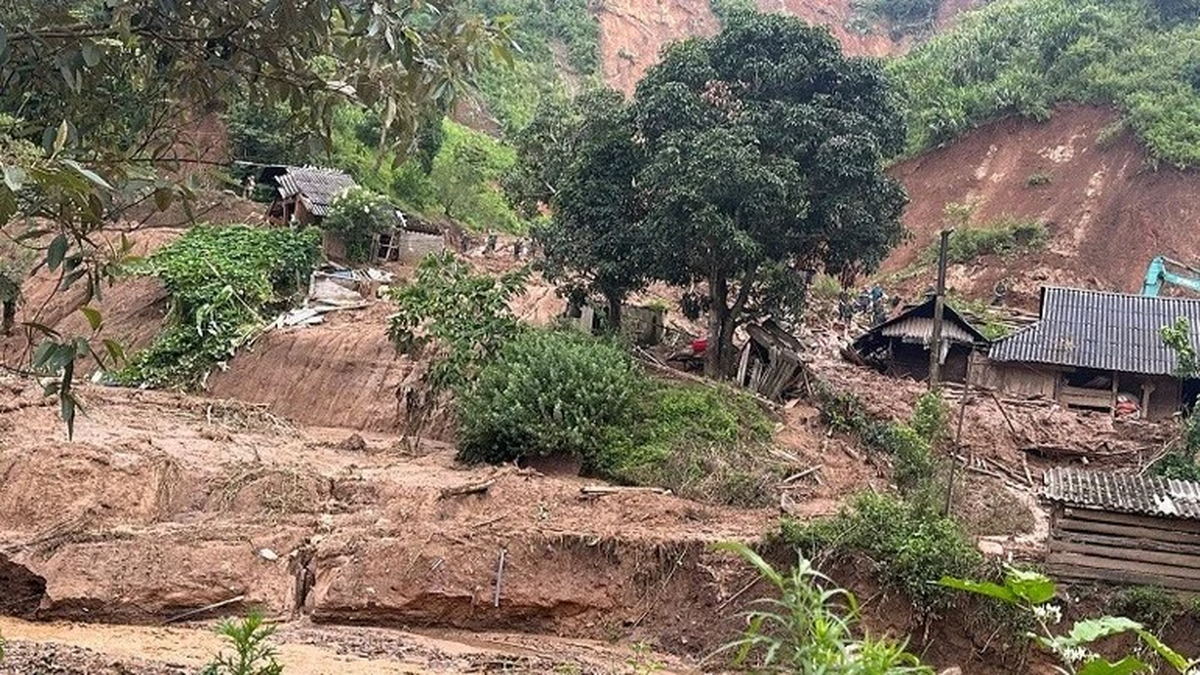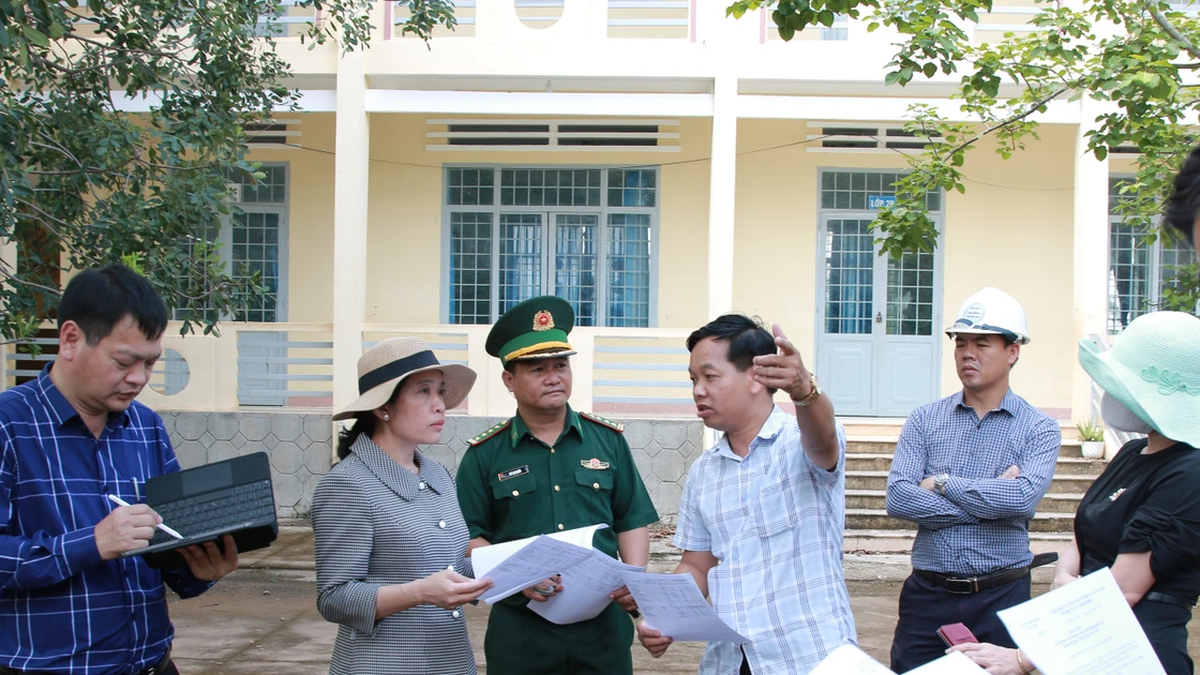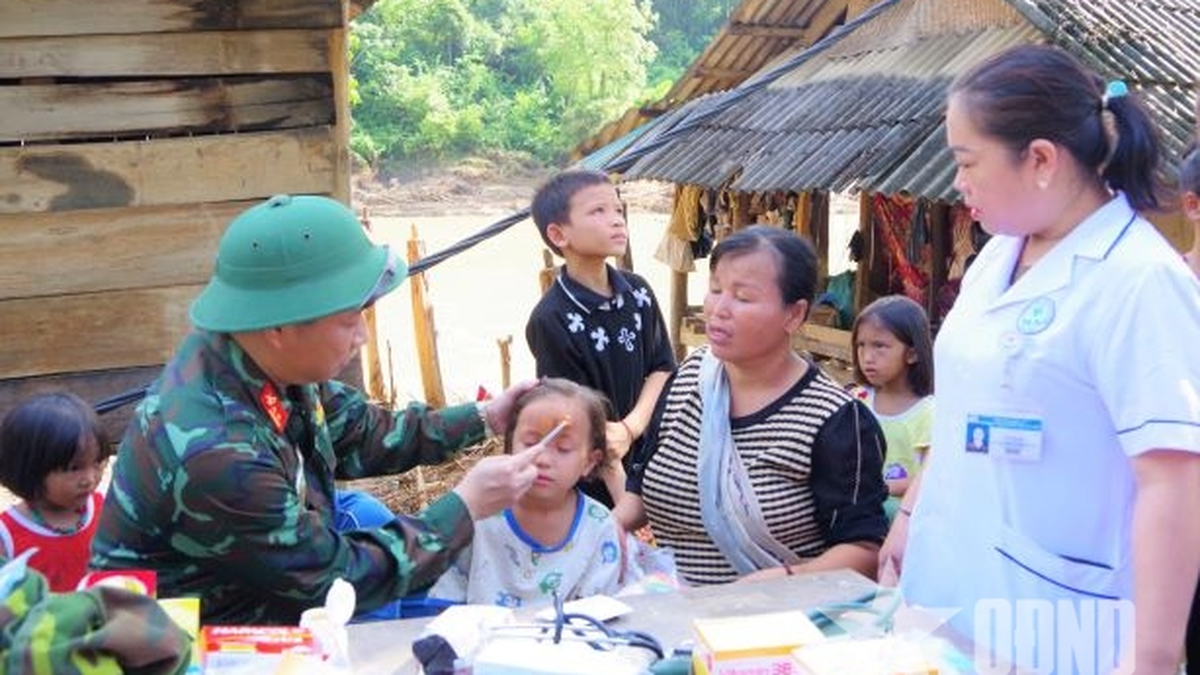Wealthy community
As dusk fell, the stuffy atmosphere of the day gradually disappeared, and the number of people on the beach increased; some went with their families, some in groups of three or five, some just to take pictures....
In the midst of that romantic scene, To Ky Lam, a 16-year-old Kinh girl, and a few friends stood on the sandy shore, facing the sea, playing the guitar and singing the folk song "Passing the bridge, the wind blows": "In love, we take off our shirts and give them to each other; When we go home, we lie to our fathers and mothers, a a a a a; That a a a a, we crossed the bridge; That a a a, we crossed the bridge; Love, love, love, the wind blows; Love, love, love, the wind blows..."
The sound is so charming with the clear voice mixed with the high and low sounds of the monochord that all visitors have to listen.
Su Qi Lam's dan bau playing skills were taught by her grandfather Su Chunfa. Su Chunfa, 65 years old, is the inheritor of the Chinese national intangible heritage project on the dan bau art of the Kinh ethnic group. His mission is to inherit the culture of the Kinh ethnic group in China.
Over a history of more than 500 years, the Kinh people in Tam Dao, Giang Binh town, Dong Hung city, Guangxi province have become an ethnic minority of China.
According to the latest statistics of the Zhuang Autonomous Region Statistics Bureau in 2020, Guangxi Province is currently home to 12 ethnic groups, of which the Han ethnic group accounts for the largest number with more than 31 million people (62.48%) and is also the ethnic group with the highest income, while the Kinh ethnic group has only more than 29,000 people (0.06%).
According to Guangxi Daily, the Kinh ethnic group is one of the wealthiest ethnic minorities in China.
"The average income per capita of the Kinh people (in 2019) exceeded the national average by more than 4,000 yuan, the rate of solid housing reached nearly 100%, the car ownership rate was over 80%... The life of the Kinh people is increasingly prosperous," the newspaper wrote.

The Kinh people in China continue to promote and maintain their unique cultural identity. Photo: People's Daily
Van Vi is the largest Kinh village in Tam Dao, its life depends on the smokeless industry - tourism . The Secretary of Van Vi village said that in this village, it is difficult to find poor Kinh people but very easy to find rich Kinh people.
The other two villages, Wutou and Shanxin, are also actively developing industries such as aquaculture, seafood processing, and rural tourism. In 2019, the per capita income of these two villages exceeded 20,000 yuan.
In particular, the Kinh people in Tam Dao pay great attention to preserving their mother tongue - Vietnamese and inheriting the Kinh ethnic culture. Kinh (Vietnamese) is a compulsory subject in the Kinh Ethnic School in Dong Hung city.
Vice Principal Lam Huy Tuoc shared: "We teach bilingual Chinese and Kinh; Kinh and Han students learn each other's languages. The school also organizes elective subjects in Kinh ethnic arts such as monochord and stilt performance...".
GDP is larger than many world economies
According to the National Bureau of Statistics of China, Guangxi Province's GDP in 2022 reached 2.63 trillion yuan (about 358 billion USD), up 2.9% over 2021.
Interestingly, if we compare Guangxi's GDP index with the GDP index of the world's economies, Guangxi will be in the top 44 largest economies according to the list published by the World Bank, surpassing many countries such as Finland (280 billion USD), New Zealand (247 billion USD), Qatar (237 billion USD), etc.
In terms of Guangxi's industries, the primary sector (agriculture and animal husbandry) reached 426.981 billion yuan, up 5.0% year-on-year; the secondary sector (mining and manufacturing) reached 893.857 billion yuan; the tertiary sector (services) reached 1.3 billion yuan.
In 2022, under the impact of many unexpected factors such as an unstable international environment and recurring epidemics, Guangxi's economy overcame difficulties and achieved overall stable recovery.
Guangxi's main socio-economic development targets in 2023 have also been set: GDP is expected to grow by 5.5%, public budget revenue by 5%, industrial added value above the designated scale by 6.5%, fixed asset investment by more than 8%, total retail sales of consumer goods by more than 6.5%, and total import and export turnover by more than 7%.
The province is expected to create 300,000 new jobs and keep urban unemployment below 6%. The consumer price index increase will be maintained at around 3%.
In terms of international trade, with its unique geographical location, Guangxi is considered a gateway for China to connect with ASEAN countries. According to the People's Daily (China), since 2000, ASEAN has always been Guangxi's largest trading partner.
According to Tin Tuc Newspaper, at the Vietnam - Guangxi (China) Trade and Import-Export Cooperation Conference held in April, Ms. Wu Juan, Vice President of the China Council for the Promotion of International Trade, Guangxi Branch, said that among ASEAN countries, Vietnam is China's largest trading partner.
At the same time, according to Ms. Wu, Vietnam has also been Guangxi's largest trading partner for 24 consecutive years.
In 2022, the total trade turnover between Guangxi and Vietnam was 29.3 billion USD, accounting for 70% of the total trade turnover between Guangxi and ASEAN.
Source



































































































Comment (0)